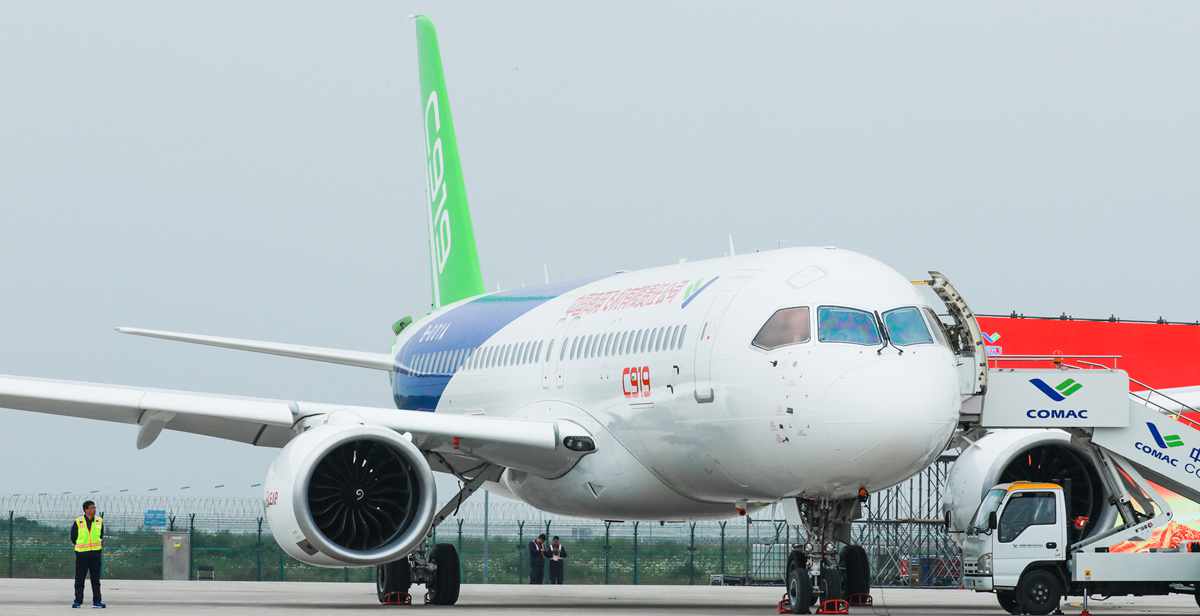
W020170508659515526585
Yesterday the CAAC issued COMAC with its production certificate for the C919. The type certification was issued in September. COMAC now has permission to accelerate from making test aircraft to full production.
COMAC likely delivers its first customer C919 to China Eastern in December. This is a milestone for COMAC. The C919 is the second aircraft developed in China after the ARJ21. Both models had long gestation periods. The learning curve has been steep. Also, the CAAC has shown itself to be highly risk-averse. Which is to its credit, and it was the first agency to ground the MAX.
What comes next? Here are a few issues to consider.
- China’s air travel market will only recover and grow when the government stops its zero-Covid policy. Lockdowns have crimped travel. And along with this has been economic damage – but the damage has not been quantified. The Economist has an interesting view on the chaos that might occur when China stops the zero-Covid policy. China’s economy is in trouble, hampering everything – including air travel.
- This means that even as COMAC starts C919 serial production, can the airlines in China take delivery? Perhaps not as quickly as COMAC wants. The market may not be ready; timing is often out of sync in this cyclical industry.
- As noted by Max Oldorf at ch-Aviation:
Air China: Reports are that they will undertake a USD 2.1 billion private share placement.
China Eastern: Reportedly looking to raise USD 2.09 billion in additional capital.
China Southern Airlines: Raised USD 627.2 million in additional capital from its shareholders.
Juneyao Airlines: Raised USD 460 million in additional capital from its shareholders.
Shenzhen Airlines: Added USD 1.3 Billion in bonds and long-term loans to its balance sheet.
Liaoning Fangda Group (controlling interest in HNA Group): Reportedly looking to raise USD 1.5 billion in additional capital.
Spring Airlines: Reportedly looking to raise USD 487.8 million in additional capital.
- This means that even as COMAC starts C919 serial production, can the airlines in China take delivery? Perhaps not as quickly as COMAC wants. The market may not be ready; timing is often out of sync in this cyclical industry.
- Competition facing COMAC isn’t going to make any accommodations. Airbus will maintain its deliveries, and Chinese airlines will probably be happy to take their A320s and A321s. These are known, while the C919 is not. CAAC will likely lean on Chinese airlines to take C919 deliveries. COMAC had better be ready with superb support because things will go wrong, and AOGs will occur. Then there is Boeing, desperate to get back into China with a backlog of MAXs ready to go. The delay in MAX deliveries is a tailwind for the C919. But not much because Boeing can outproduce COMAC and deliver faster.
Moreover, the C919 comes in one size, whereas Airbus and Boeing offer options. COMAC’s success isn’t assured. CAAC will reduce the state’s risk but can’t make the C919 a success. The market will be tough to win over, even with CAAC’s help. - The supply chain is wobbly. Airbus and Boeing can’t get CFM LEAP engines quickly enough. What do you suppose the COMAC situation is going to look like? If you’re CFM, you focus on Airbus and Boeing. COMAC will likely also see slow engine deliveries because that’s where the industry is. That’s just engines. The other parts, like avionics, will also be in short supply.
While everyone cheers COMAC’s achievement, it is important to temper enthusiasm. The C919 is an achievement. But the next set of hurdles is here, and the CAAC has less control in the future.
Views: 2




